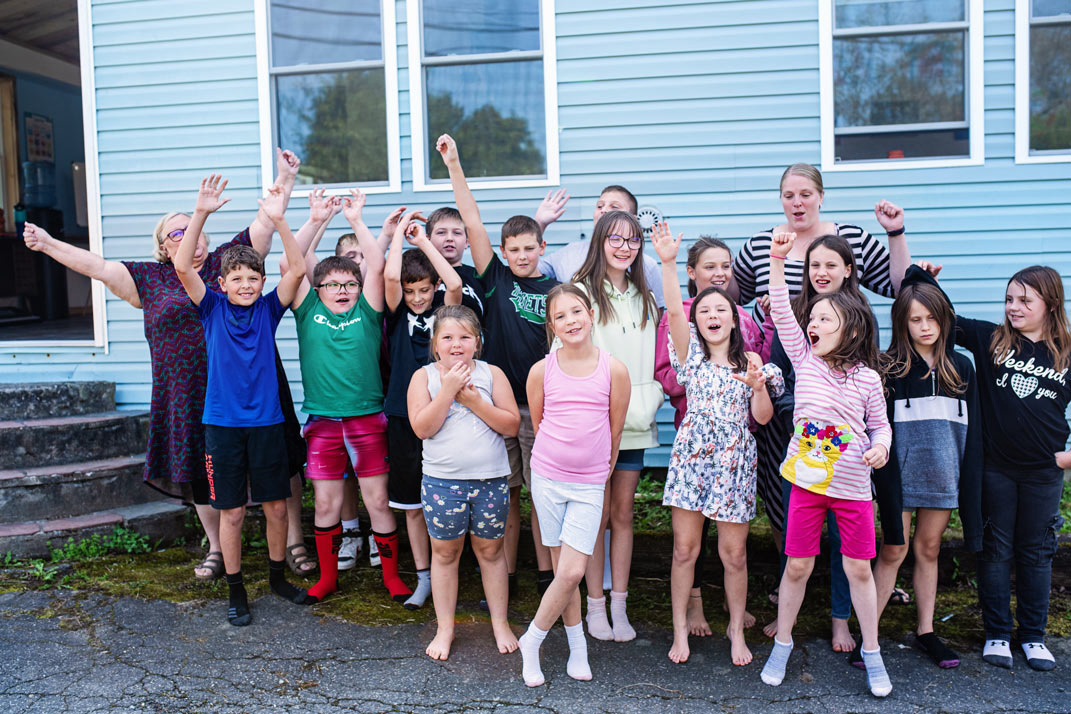Homeschooling Arizona Laws & Programs: Everything You Need to Know in 2024
Thinking about homeschooling but don't know where to begin?
Don't worry! We can guide you through everything you need to know to start homeschooling and microschooling in Arizona. We'll cover legal requirements, eligibility for the Arizona ESA Program, and how microschooling can provide a personalized education alternative. Plus, you'll even learn about the benefits and how to navigate the educational landscape in Arizona for the 2023-24 school year.
Let's get into it!
What are my options for homeschooling in Arizona?
Great news! Arizona is a homeschool-friendly state with flexible laws that support parents’ right to educate their children in the way that they see fit.
Homeschooling is one of the many school choices you have as an Arizona parent. Other options include private schools, charter schools, and microschools. Let’s explore some Arizona homeschooling basics.
Getting started
Getting started as a homeschooler in Arizona is relatively simple, but that doesn’t stop state legislators from writing lots of complicated legal documentation about it!
If you’re in the mood for that kind of a read, here’s the Arizona State Statute on homeschooling.
But just in case you aren’t a lawyer—here are the highlights.
Submitting a homeschool affidavit
If your child is between the ages of 6 and 16, you must submit a homeschool affidavit for any student who is not enrolled in a public school or using Empowerment Scholarship Funds (we’ll talk about that more in a minute) within 30 days of their 6th birthday or your decision to homeschool them. There is no need to file an affidavit if your child has not turned 6 or is older than 16.
- Download the affidavit here.
- Fill it out and get it notarized.
- Submit your notarized form with a copy of the child’s birth certificate to your county’s school superintendent. Find your county’s superintendent info here.
What are Arizona’s homeschool requirements?
Once you’ve submitted the affidavit, you are legally responsible for instruction in (at least) the following areas: reading, grammar, math, social studies, and science. Unlike other states, you do not need to submit lesson plans, get curriculum approved, or submit evidence of learning to any state entity. Your child does not need to take any state-mandated standardized tests.
Keep in mind the school district you reside in is still responsible for something called “child find,” which means that if you suspect that your child might have special needs (such as a speech delay or learning impairment), you can request an evaluation from your school district even though your student is not enrolled. If your student qualifies for special education services, they can receive these services free of charge through your local school. Kind of neat, ya?
You can find more information about homeschooling in Arizona from the Homeschool Legal Defense Aliance or from Arizona Families for Home Education.
Does Arizona pay for homeschooling?
Although Arizona does not offer financial assistance for legal homeschoolers, it is home to one of the most progressive school choice laws in the country: the Empowerment Scholarship Account Program (ESA).
This program makes it possible for you to receive about 90% of the funds that would have been spent on your child had you enrolled them in a public school. Here’s the breakdown of how much funding is available per student per year depending on grade level (keep in mind that actual funding amounts vary by the district you live in).
These funds go into a third-party account, and you can spend them on educational materials, curriculum, tuition, programs, or therapies. Every K-12 student who applies for this program is approved. Each purchase is tracked and approved to ensure the responsible use of public funds. For more information, read our post about how to get started with the Arizona ESA program or download our AZ ESA Details Overview.
You can find the application for the ESA program here.
If you are receiving ESA funds, you do not need to fill out a homeschool affidavit. The state does not consider your children homeschoolers. Your students are considered ESA students, which is a separate category. The requirements for using ESA funds are the same as for homeschooled students - no testing, no curriculum approvals, etc. But you are still responsible for instruction in reading, grammar, math, social studies, and science, and all purchases must be approved.
Your school district will still evaluate your child if you suspect they have any learning disabilities. They will not provide special education services to your child. However, you can qualify for additional ESA funding if your student has additional needs.
Homeschooling Pros and Cons
Homeschooling affords families more time together, more control over what and how their children learn and allows learning to be personalized and highly engaging. Statistically, homeschooled children tend to perform better than students who attend public schools (check out tons of interesting homeschooling statistics here).
On the other hand, it can be somewhat isolating for kids and overwhelming for you as the parent/teacher. You’ll need to be proactive about building community for your kids and for yourself. You may want to look into local homeschool groups, park days, co-ops, or even a microschool.
What is a microschool?
A microschool is a tight-knit community of 5-10 kids led by an inspiring, caring adult. We call this person a microschool guide. Prenda is one of the largest and most trusted microschool networks in the country. We’ve helped over 1,000 people start microschools in their communities.
Microschools provide a social and collaborative learning environment where kids get to learn at their own pace and level through mastery-based academic programs as well as explore their interests through interactive, hands-on, inquiry-led experiences.
How does Arizona support microschooling?
Under the Empowerment Scholarship Program, thousands of students in Arizona are attending microschools with no out-of-pocket cost to parents. Microschooling is one of the fastest-growing educational movements in the country, and Arizona is leading the way.
Why microschooling may be the right option for your family
Microschools are kind of the sweet spot between homeschooling and a normal brick-and-mortar school. Your kids still “go to school,” but it’s usually for fewer hours and fewer days than conventional school. That means that you still get to spend more time with your kids, and they get to have a healthier school-life balance.
You also get a big say in what and how your kids learn since you’ll get to help choose their curriculum and set personal academic goals with your child and their guide. It’s a nice balance of responsibility and support. Microschool parents feel involved, heard, and in control while not feeling overwhelmed or burnt out.
To see if there are any microschools in your area, visit prenda.com/find-a-microschool. If there aren’t any microschools in your area, don’t worry—it’s easy to start one!
How can I start a Prenda Microschool?
Prenda has created an open-and-go system for starting a microschool. We provide all the support, tools, training, and resources you’ll need to get started. This includes a K-8th grade student-centered learning system that doesn’t require guides to lesson plan, grade, or be a content expert. In fact, you don’t need any formal education background or credentials to run an amazing microschool! If guiding isn’t something you’re interested in personally, think of who you’d want to guide your kids—tell them about Prenda and support them in becoming a Prenda guide!
Want to learn more about microschooling? Check out our Microschooling 101 video!

.png)

 Share on Facebook
Share on Facebook
 Share on Twitter
Share on Twitter
 Share on LinkedIn
Share on LinkedIn
 Share on Pinterest
Share on Pinterest

.svg)





.svg)






